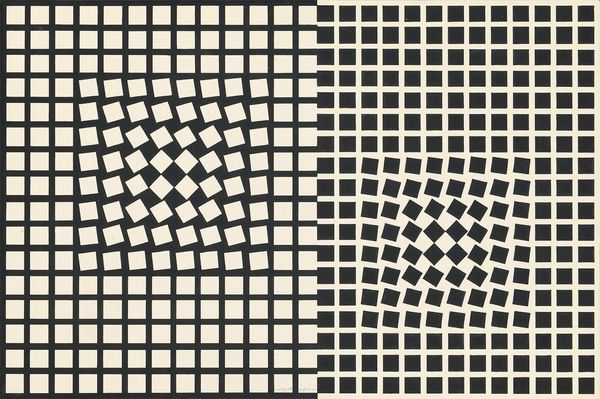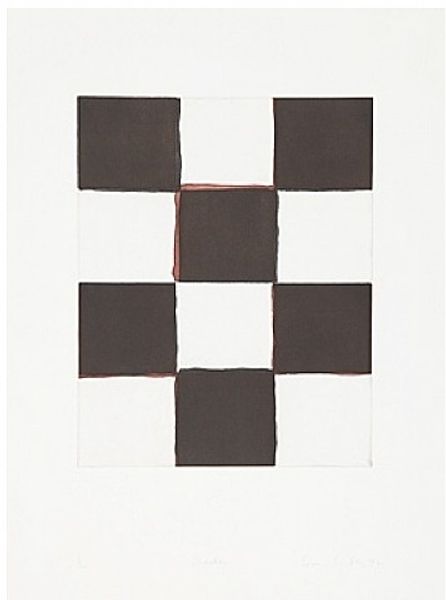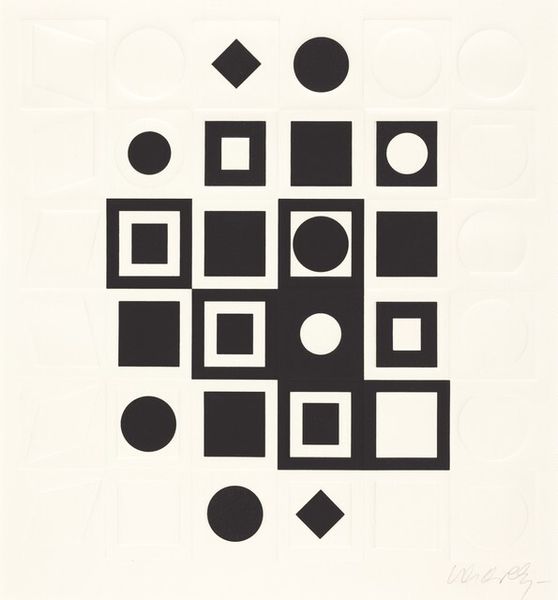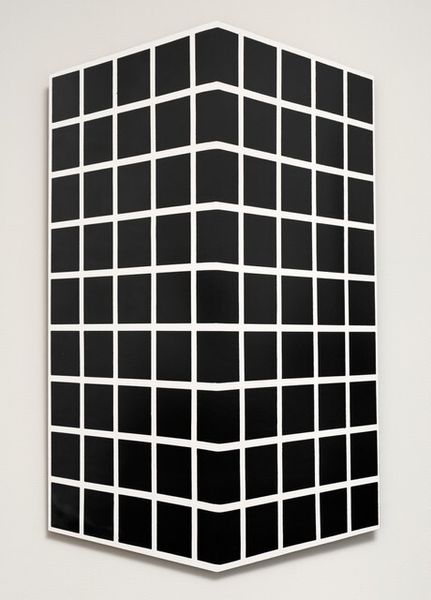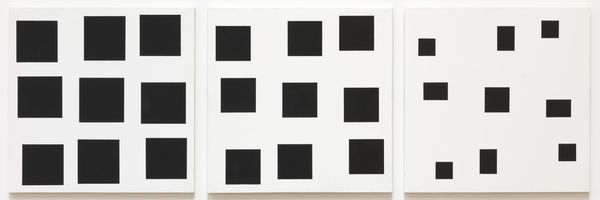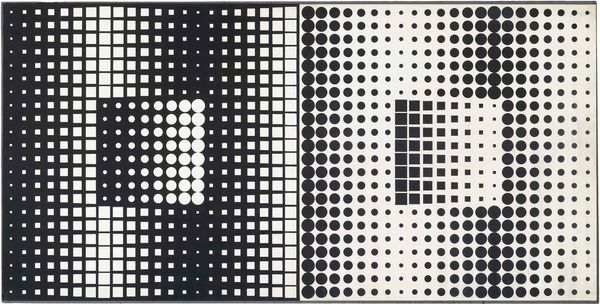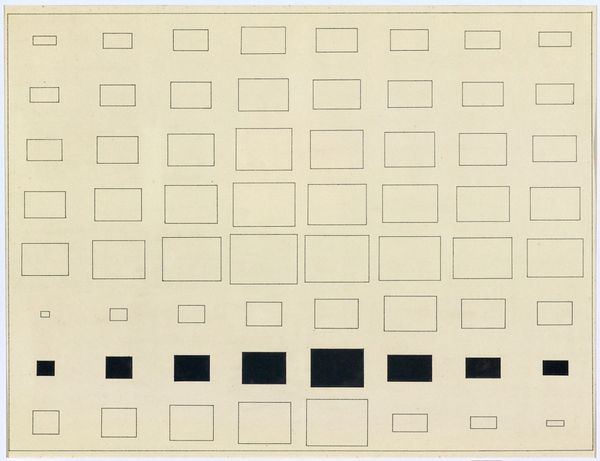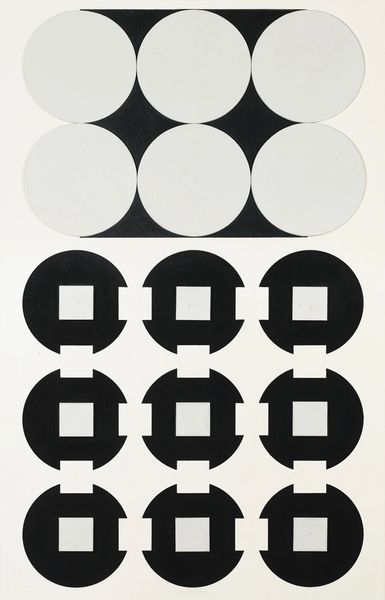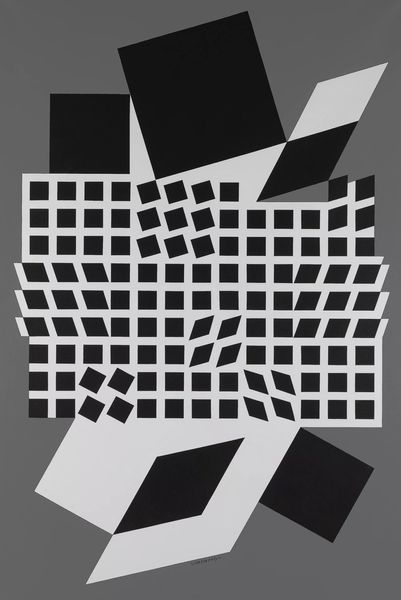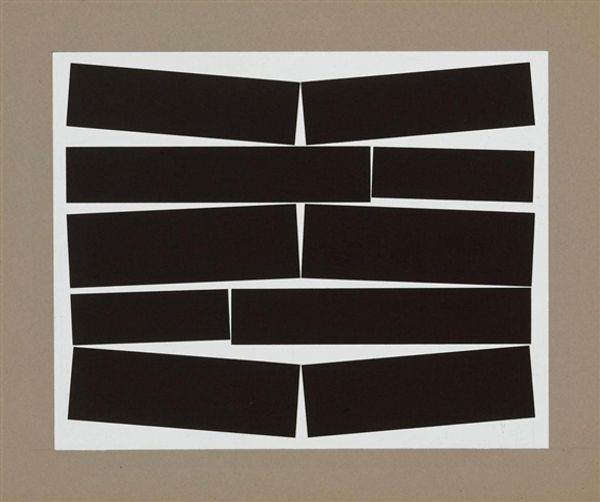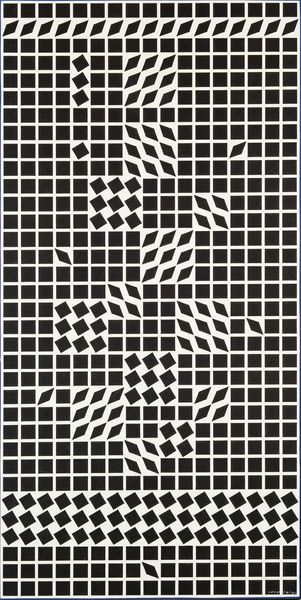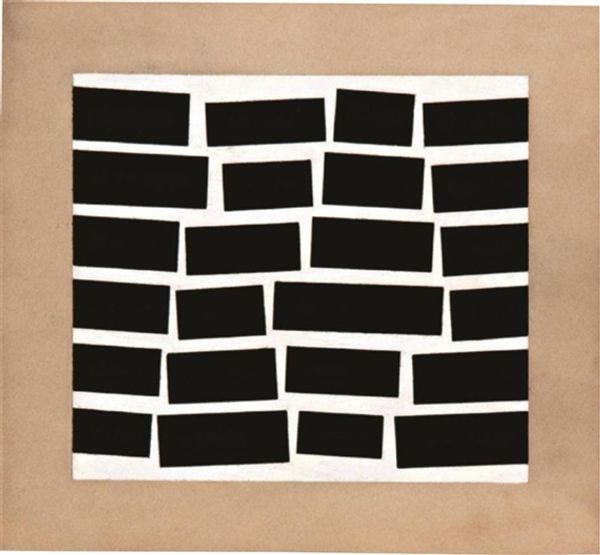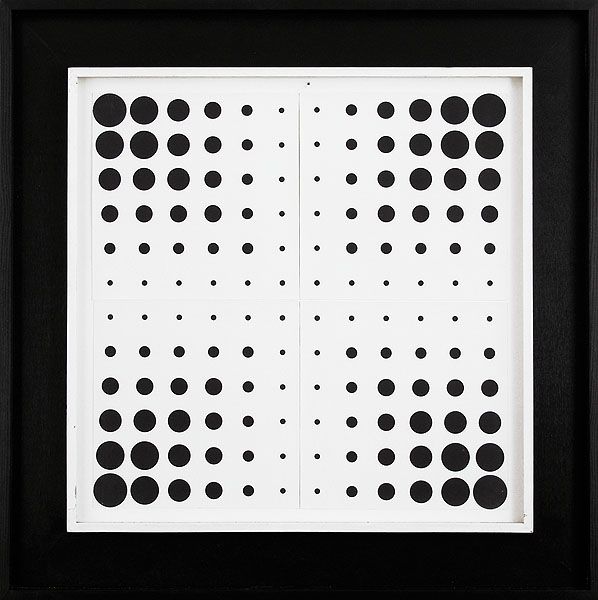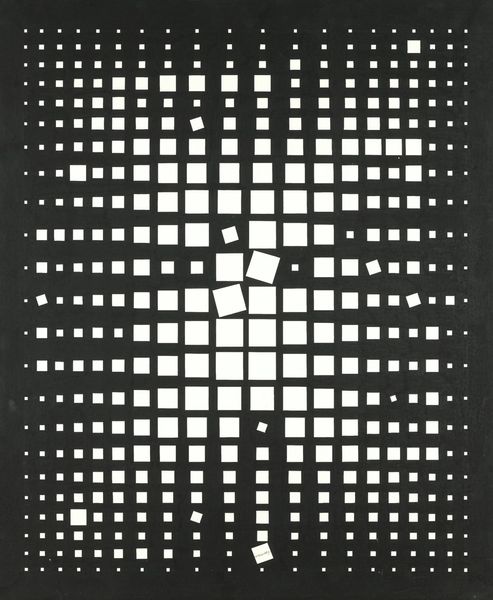
#
op-art
# print
#
op art
#
form
#
geometric
#
abstraction
#
line
#
modernism
Copyright: Modern Artists: Artvee
Curator: The artwork before us, created in 1957, is titled "ERIDAN" and comes to us from Victor Vasarely. The medium here is a print. Editor: Immediately, I'm struck by its starkness—the high contrast, the severe geometric shapes. There's something almost oppressive about the way those squares seem to warp. Curator: The warping, as you call it, is key. It speaks to Vasarely's interest in Op Art, an attempt to explore perception and create optical illusions through geometric forms. Notice how the grid seems to pulsate, creating a sense of movement where there is none. What emotional effect does it have, for you? Editor: A manufactured disquiet. Knowing it's "just" an illusion makes me think about industrial production of experiences and perception itself becoming another consumable good. Was Vasarely using industrial processes for this print? It would add a layer of complexity, considering this tension. Curator: His practice frequently incorporated silkscreen printing. The crisp, clean lines are indicative of industrial methods, perfectly aligning with the visual trickery and planned visual perception. In the language of symbols, such sharp, mathematical abstraction represents not chaos but structured potential, perhaps mirroring the promise and anxiety of the atomic age. Editor: Anxiety seems right, especially framed in the era. There's something clinical, even sterile, about the piece as a whole. How do the simple materials here impact the work's message? A painting could be something very different. Curator: By opting for a reproducible print, Vasarely democratized access to art. It echoes his aim of integrating art into everyday life, shifting away from elitist spaces toward more accessible settings. The ubiquity that printing allows serves his artistic ideology: changing collective visual experience itself. Editor: So, the means of production becomes a tool, shaping audience and influencing the work's accessibility beyond aesthetics, creating, in its time, both physical access and dialogue about art itself. Curator: Precisely. What initially looks like an abstract manipulation is revealed as a commentary on visual habits and class divides in the age of mechanization. Editor: Well, considering process has definitely revealed deeper textures in those flat squares. Curator: Yes, a powerful blend of optical play, historical echo, and commentary on both production and symbolic accessibility.
Comments
No comments
Be the first to comment and join the conversation on the ultimate creative platform.
